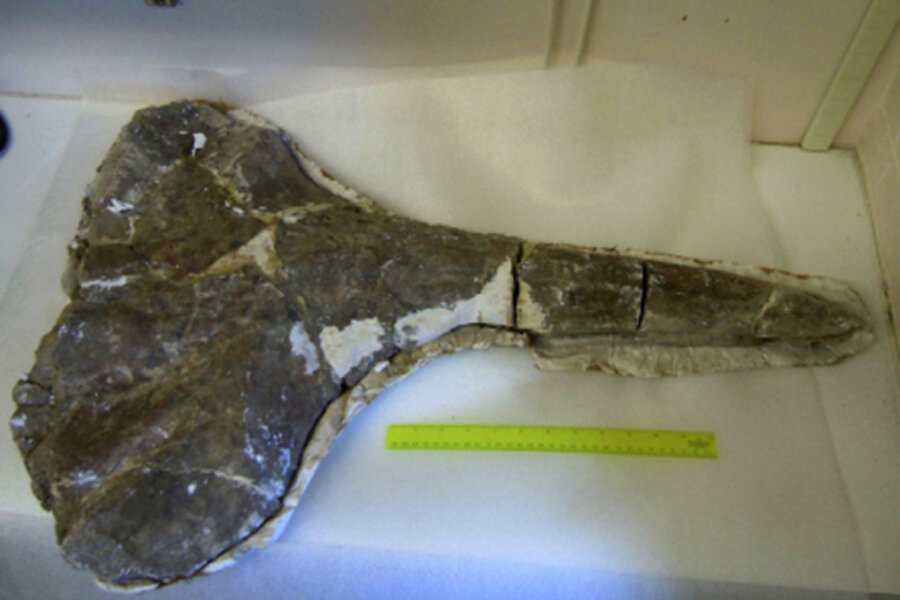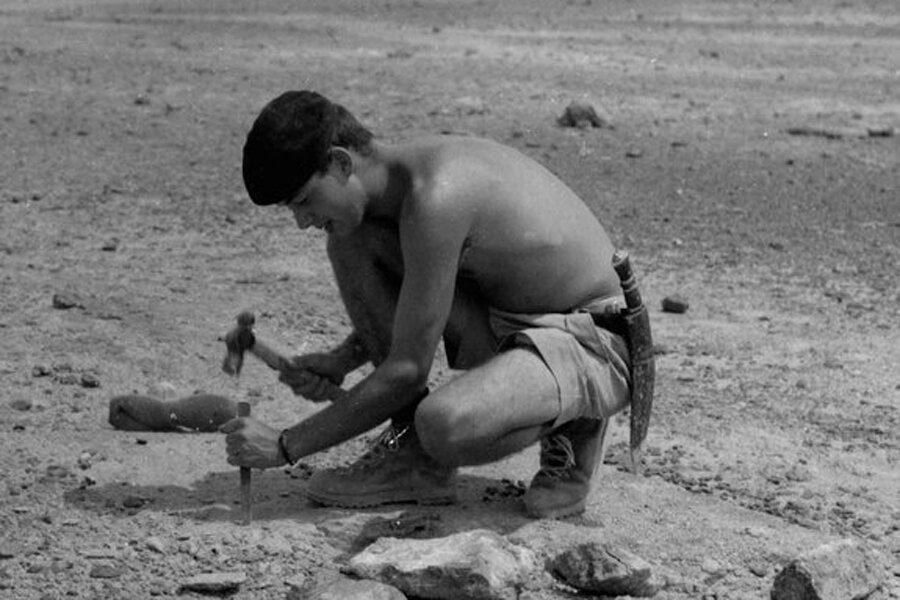How an ancient whale skull could point to humanity's birthplace
Loading...
A 17-million-year-old beaked whale fossil is helping researchers solve a puzzle about the likely birthplace of humanity in East Africa, a new study finds.
The whale (Ziphiidae) lived when the East African plateau was substantially lower and covered by dense forests, the researchers said. Scientists have long tried to figure out when the uplift occurred, because when it did, the moisture from the Indian Ocean could no longer reach the trees and vegetation, and the area turned into a savannah, research suggests.
Extinct ancestors to modern humans may have lived in trees in East Africa, but after the area turned into grassland, these early humans gradually began walking on two feet, researchers suggest. [Top 10 Mysteries of the First Humans]
"It's more or less the story about the bipedalism," said study researcher Henry Wichura, a postdoctoral candidate in geoscience at University of Potsdam in Germany.
But the timing of the East African plateau uplift has eluded scientists. The whale fossil helps researchers get closer to that date, which likely occurred sometime between 17 million and 13.5 million years ago, according to the new study.
A whale of a tale
The story of the whale skull is one of rediscovery. Researchers originally found the fossil in 1964, but didn't publish a study on it until 1975. Then, they misplaced the skull until 2011.
The skull is the oldest known fossil of a beaked whale, and it confounded researchers at first. Beaked whales are deep divers that live in the ocean, but the fossil was found 460 miles (740 kilometers) inland from the present-day East African coast, and at an elevation of 2,100 feet (640 meters).
Perhaps the 23-foot-long (7 m) whale used to live in the Indian Ocean, but mistakenly strayed into a river that led it into modern-day Kenya, the study researchers said.
"We came to the idea that it used a large river system, because the whale had been found in lake sediments which are [mixed with] river sediments," Wichura said. "So we can say that it died in a kind of river-lake environment."
But the fossil sat unstudied for nearly 40 years, until researchers rediscovered it at Harvard University. (Interestingly, a curator found the fossil in the former office of renowned paleontologist Stephen Jay Gould. At the time, the university was using Gould's office for temporary storage during a remodel, according to the study.)
Once recovered, the skull helped Wichura and his colleagues date the East African plateau's uplift. They wondered how low the East African plateau was before the region's topography changed, so they searched for other instances of whales getting lost in rivers. For instance, one whale became stranded in the Thames River in 2006, and killer whales have swum into the Columbia River in the Pacific Northwest of the United States.
The scientists took the grade of the steepest river from case reports, and applied it to the prehistoric river used by the whale. So, if the ancient river rose at 2.5 inches a mile (4 centimeters per km) from the coast, the East African plateau was between 79 feet and 121 feet high (24 m and 37 m) at the time the whale lost its way and died. (The difference in height takes into account the different routes the whale may have taken to swim inland from the Indian Ocean.)
Considering that the plateau is now about 2,034 feet (620 m) tall, the northern part of the Eastern African plateau must have been uplifted by about 1,925 feet (590 m) over the past 17 million years, the researchers determined.
Furthermore, Wichura found that at 13.5 million years ago, part of the Eastern African plateau uplift had already begun, putting a bookend on when the uplift started. (He noted that the uplift happened because of mantle plumes, hot material that rises through the Earth's mantle and pushes up against the crust.)
Without the rediscovered skull, it would have been difficult to help date the uplift, he said.
"With the whale, everything started," Wichura told Live Science.
The study reminds both professional and amateur paleontologists to study the location and age of each fossil they find, said Frank Brown, a professor of geology at the University of Utah, who was not involved in the study.
"Even single specimens of organisms tell us a great deal about the history of the Earth, and they sometimes appear in surprising cases," Brown said. "This is one such case."
The study was published today (March 16) in the journal Proceedings of the National Academy of Sciences.
Follow Laura Geggel on Twitter @LauraGeggel. Follow Live Science @livescience, Facebook & Google+. Original article on Live Science.
- Image Gallery: Our Closest Human Ancestor
- Top 10 Things that Make Humans Special
- Whale Album: Giants of the Deep
Copyright 2015 LiveScience, a Purch company. All rights reserved. This material may not be published, broadcast, rewritten or redistributed.






